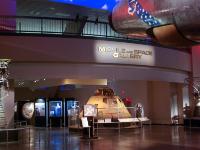 1 The museum lobby features a statue of Daedalus and Icarus of Greek mythology. Daedalus fashioned wings of feathers and wax, for him and his son, so that they could fly from the island on which they were imprisoned. Despite his father's warning, Icarus flew too close to the sun wherein the wax melted and he fell into the sea. This story is of course an allegory about the dangers of pushing the boundaries of flight. Very appropriate. |
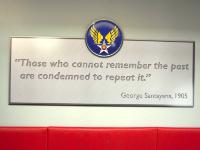 2 This thought-provoking aphorism greets you in the lobby. I saw a cartoon once, during the invasion of Iraq in 2003, that said "Those who cannot remember the past are in charge." George Santayana was a Spanish-American philosopher who was raised and educated in the United States. Another of his famous quotes is "Only the dead have seen the end of war." |
 3 From the foyer you first go through the Gift shop (which is very good). |
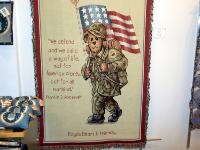 4 I hope that at some time in the future we see the return of this America, the America I once knew and loved. Everything in this USAF museum is about the America represented in this tapestry. "The years in the aftermath of WWII were years of epic American statesmanship — the years of the Berlin airlift and the Marshall Plan, in which America showed its true greatness. For having won the war, we chose not to behave like a conqueror, but instead to build the foundations of lasting peace. Thus the General Agreement on Tariffs and Trade, signed in 1947 — at a time of overwhelming U.S. economic dominance — didn’t seek a privileged position for American products, but instead created rules of the game to promote prosperity around the world. Similarly, NATO, created in 1949 — at a time of overwhelming U.S. military dominance — didn’t seek to lock in our hegemony. Instead, it created a system of mutual responsibility that encouraged our allies, including our defeated former enemies, to see themselves as equals in preserving our mutual security." |
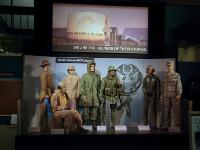 5 At the end of the gift shop, about halfway down the hangar, you are greeted with this tribute to the service men and women of the US Armed services. The Great Seal of the USA is visible. It has a bald eagle clutching 13 arrows in its left claw and an olive branch in its right. |
 6 Jink left then right, and you're in the Kettering Hall. More on Kettering later but for now his father was an early director of NCR and a Dayton suburb was named in his honour. I lived in Kettering for 11 months during 1970. |
 7 This is a most amazing mosaic from a famous photograph of Wilbur and Orville Wright's first flight at Kitty Hawk, North Carolina on Dec. 17 1903. The Wright brothers lived in Dayton and constructed the first Wright flyer in their bicycle shop. |
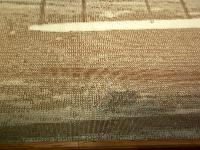 8 A close-up of the mosaic reveals that it is contructed from a set of standard tiles, with each tile representing a shade that graduates from light to dark. |
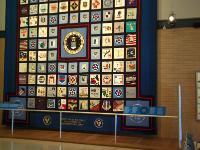 9 This is the USAF's 50th Anniversay (in 1997) Commemorative Quilt. It contains 100 hand-made squares representing nearly every USAF installation throughout the world with each square reflecting its mission. The quilt centre features the Air Force seal and is surrounded by the seals of each major Air Force command. |
 10 The four corners of the quilt are dedicated to installations that have closed in the US and worldwide. The top border is embroidered with the Air Force core values and is flanked by the 50th anniversary logo of stars and wings. Thread used to join the squares together was flown aboard the Space Shuttle Atlantis on its Sept. 22 1997, mission. |
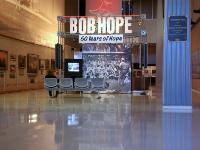 11 Bob Hope is renowned for entertaining troops during WWII and subsequent wars. This exhibition is a tribute to him |
 12 Turn left and you're in the Air Power Gallery (WWII) and turn right and you're in the Early Years Gallery. |
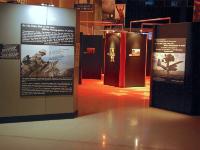 13 This exhibit called ""On the Other Side of the Lens...Military Photographers in Action" is in the Hall of Honor at the museum which is located on the southern side in front of the Early Years Gallery. |
 14 The exhibit features 56 photos depicting the talent of Air Force and Joint Operations photojournalists, with significant contributions provided by Air Force News. In addition to the photos, a multimedia presentation and graphic banners accompany the exhibit. |
 15 More than 30 photographers are represented in the exhibit. |
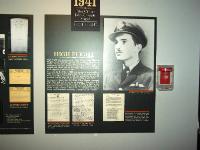 16 "High Flight" was composed by Pilot Officer John Gillespie Magee Jr., an American serving with the Royal Canadian Air Force. He came to the United States in 1939 and earned a scholarship to Yale, but in September 1940 he enlisted in the RCAF and graduated as a pilot. He was sent to England for combat duty in July 1941. |
 17 In August or September 1941, Pilot Officer Magee composed "High Flight" and sent a copy to his parents. Several months later, on Dec. 11 1941, his Spitfire collided with another plane over England and Magee, only 19 years of age, crashed to his death. His remains are buried in the churchyard cemetery at Scopwick, Lincolnshire. A copy of this poem, signed by my friends in California when I left the USA in 1988, hangs on my wall at home. |
 18 This exhibit describes the dress and equipment used by Luftwaffe pilots in WWII. The exhibit is located in the Air Power Gallery WWII near the Japanese Zero. |
 19 The Hall of Fame is a small gallery squeezed between the first and second hangars. |
 20 Looking into the Hall of Fame. The exhibits are not all that exciting. |
 21 The NCR Early Flight Gallery. I imagine that NCR did a cost/benefit analysis on this meager display. Anyway, NCR has sold up in Dayton, its home for over a hundred years and moved to Georgia for its death throes. |
 22 This is a very attractive model of an early Wright Flyer. |
 23 This is a represenation of the ground control tower at Los Angeles International. |
 24 All in all, this hall has all the room that it needs. It's quite uninspiring. |
 25 The Berlin Blockade (24 June 1948 – 12 May 1949) was one of the first major international crises of the Cold War and the first such crisis that resulted in casualties. The Soviet Union blocked the Western Allies' railway and road access to the sectors of Berlin under Allied control. In response, the Allies organized the Berlin Airlift to carry supplies to West Berlin. |
 26 |
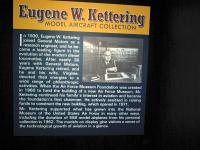 27 "In 1930, Eugene W. Kettering joined General Motors as a research engineer, and he became a leading figure in the in the evolution of the modern diesel locomotive. After nearly 30 years with General Motors, Eugene Kettering retired and he and his wife, Virginia, devoted their energies to a wide range of philanthropic activities." |
 28 Kettering supported the museum in many ways, including the long-term loan of 558 model airplanes from his personal collection in 1962. |
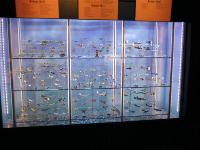 29 The models on display give visitors a sense of the technological growth of aviation in a glance. END OF TOUR. REJOIN AT THE PRESIDENTIAL HANGAR Next folder: Presidential hangar |
